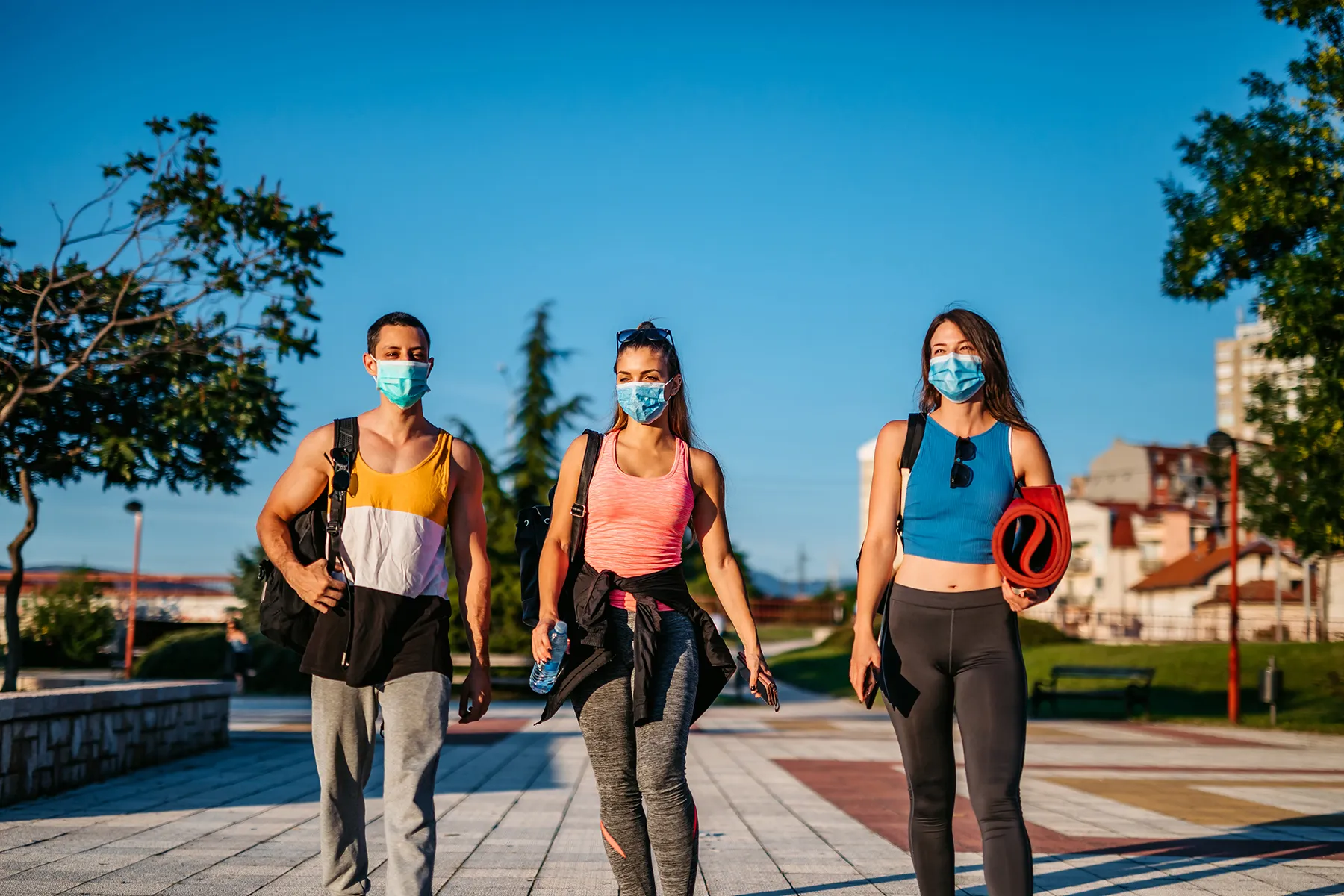How to Harness Exercise’s Health Benefits During the Pandemic

This pandemic has limited, curtailed, and dramatically altered our ability to sustain physical activity. Many haven’t exercised for months due to gym closures, bad weather, potential exposure to COVID-19 in group activities, depression, illness, and more.
My sports medicine colleagues and I recently published fitness guidelines for those who exercise regularly and those who don’t but should. In our Call to Action paper (COVID-19 Considerations for Sports and Physical Activity), we explain that the right amount of physical activity is an incredibly powerful medicine to fight COVID-19 and other life-threatening diseases.
Research has shown that no exercise is detrimental to the immune system, moderate exercise enhances the immune system, and too much exercise does the immune system more harm than good. All physical activity helps reduce anxiety and depression, which is even more prevalent during this global health crisis.
Make your health and wellness a priority with the following fitness guidelines.
If you typically exercise 3 to 6 days each week
As a former Olympic athlete and past president of the American College of Sports Medicine, I strongly encourage all of you in normal health to maintain physical activity during the pandemic. If you’re an athlete or physically fit, this may not be the best time to strive for peak physical performance due to the restrictions on group exercise classes, team sports, and access to gyms.
For the biggest benefit, you need to do both cardiovascular and strength training for 150 to 300 minutes each week. Exercising moderately to vigorously for 30 to 60 minutes most days of the week can both prevent and reduce the effects of chronic disease, improve your physical and mental health, and support your immune function.
Do not wear a mask during high-intensity exercise, but be sure to distance yourself from others properly.
Know your limits, and avoid wearing down your immune system with overtraining. The goal is to optimize your immune system with the right balance of training, rest, sleep, nutrition, and hydration.
If you haven’t exercised in months (or years)
A lot of people became inactive during the pandemic – you aren’t alone. But, the longer inactivity goes on, the more long-term detrimental effects to your health.
You may have one or two underlying conditions that put you at greater risk for serious health complications or death from COVID-19 infection. These include obesity, hypertension, type 2 diabetes, chronic kidney disease, cardiorespiratory disease (like COPD), and cancer.
Your return to physical activity and sports may be a little trickier. You may not know how to get started or commit to a consistent exercise routine. Before beginning any new exercise program, speak with your primary care physician or a sports medicine physician. Telehealth can enable you to meet remotely to discuss your health status and how to safely and successfully become more physically active.
Find an exercise routine, sport, or a couple of physical activities (appropriate for social distancing) that you can stick with, including both strength and cardiovascular training. If you’re getting back into exercise after a period of inactivity, don’t expect to return to performing at your personal best quickly.
For the biggest benefit, work out or play sports for 150 to 300 minutes each week. Exercising moderately for 30 to 60 minutes most days of the week can prevent and reduce the effects of chronic disease, improve your physical and mental health, and support your immune function.
If your stamina is an issue, consider breaking daily exercise into two 15-minute sessions or three 10-minute sessions. You’ll get about the same benefit as exercising for 30 minutes at a time, which you can work up to.
Exercise tips for everyone
Wearable fitness trackers, step counters, and competitive apps can help you get back into regular physical activity and stay motivated.
If you’re at high risk for serious coronavirus complications or are recovering from COVID-19 infection, refrain from exhaustive exercise and overtraining.
For indoor and outdoor exercise around others, you need to wear a mask and maintain six feet of distance. This is particularly important in group exercise activities.
Until there’s a vaccine, finding safe public places to exercise can be a challenge. Be creative with physical activity. Find ways to maintain physical distancing guidelines while exercising outside, with the family and friends you’re isolating with, and in public places during off-peak times of the day.
When we come out of the pandemic, if this has been a period of physical inactivity for you, it will be more challenging to return to an active lifestyle. It’s important to incorporate exercise into your regular schedule, despite pandemic-related challenges. Your success at fighting COVID-19 can only be enhanced by exercising safely and understanding the critical role that physical activity plays in your health.

Expert Contributor
Written by Thomas Best, M.D., Ph.D., FACSM
Professor of Orthopedic Surgery, Miller School of Medicine
Research Director, University of Miami Sports Medicine Institute
Tags: COVID-19, Disease Prevention, Dr. Thomas Best, exercise
